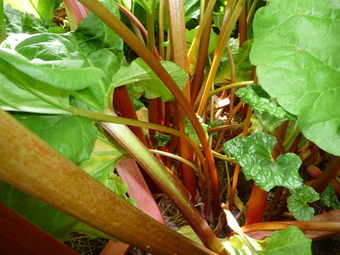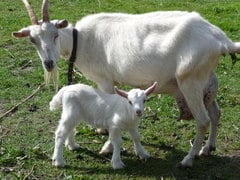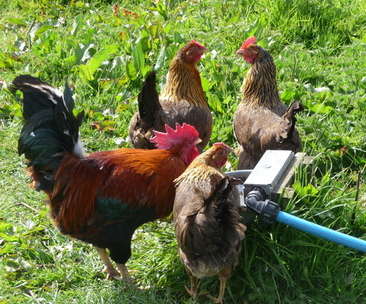
Little Arthur farm was "born" in 1976. We had moved to St Martins in January of that year being lucky enough to get a Duchy lease on a tiny, derelict cow shed and eight acres of neglected farm land. We put them together and called them "Little Arthur" after the island directly in front of our future farmhouse home.
Our initial aim what was then called "self-sufficiency" which meant independence, growing one's own food, baking one's own bread, brewing one's own beer. Sustainability was at its very heart, nurturing the land and having an integrated farm where animals and crops complemented each other. We harboured romantic notions of the crofting lifestyle, milking our cow, catching a few fish, potting for the occasional lobster, gathering our own firewood, spinning our own wool, churning butter and making cheese.. Much of this we gradually achieved but, realistically, we also needed some "cottage industry," to pay the rent, the rates and for essential materials - we couldn't produce everything!
Using spare farm produce and crabs and lobsters from our pots, we began offering cream teas and salad lunches in our cottage garden. We let out our bedroom to paying guests. In the winter, we grew narcissi for the mainland markets. Later, we learnt leatherwork and offered hand-made shoes and boots. Having home-educated our children, we supplied environmentally-inspired courses and tutoring to other home-schooled children. Thereby, we developed a range of small-scale industries which, in future years, our children have gone on to develop - a cafe and bistro; a fish and chip restaurant based on seafood caught from St Martins waters; fields of "pinks" and soleil d'or to supply flowers all the year round; self-catering accommodation, shoe-making; educational courses. The farm and garden are still, nevertheless,at the heart of our activities.


Little Arthur Market Garden
At Little Arthur, the gardening year starts early. In the Autumn, when the first of the winter gales blow banks of seaweed ashore, we keep alive the local tradition of hauling this weed onto our cultivated plots. Here, the seaweed will decompose and add valuable nutrients to the soil and improve its texture. To this will also be added well rotted farmyard manure, around two ton each year.
By Spring, the soil is ready to be prepared for planting.. In early February, the first of our early potatoes will be planted, usually a traditional variety such as Home Guard. Meanwhile, throughout February, seeds will be sown for tomatoes, peppers, aubergines and a successional planting of lettuces maintained in our cool tunnel. This ensures we can keep Little Arthur café supplied with salad crops for most of the season.
Most types of vegetable crops are grown - legumes, which help, via their nitrogen-fixing root nodules, to provide additional nitrogen to the soil; pumpkins, courgettes, butternut squash,asparagus, leeks, onions and sweetcorn. We also have a herb garden and fruit cage, plus a large rhubarb patch to keep up supplies to the bistro and to Adam’s Fish & Chips.
Animals and poultry have always been central to the farm. Crofters and small-scale farmers everywhere invariably find themselves with much land unsuited to crop growing. Moors and heathlands have but meagre coverings of soil, often acid in nature,and are exposed to strong winds, with little tree protection. Our lower fields, being close to sea level, flood in winter and then dry out in summer drought. Such land is too poor to support crops but provides seasonal grazing for grazers and brousers like sheep and goats who convert the the vegetation to milk, fibre and meat whilst keeping the land free from invasive weeds and providing valuable droppings which fertilise the soil. This is why sustainable farming is mixed farming, blending the needs and requirements of nature, livestock and humans on a strictly local scale. Little comes off the farm and little has to be imported onto the farm. What does leave the farm travels but a few hundred metres to our cafe or to Fish and Chips where it is cooked and consumed thereby eliminating many fuel miles.



